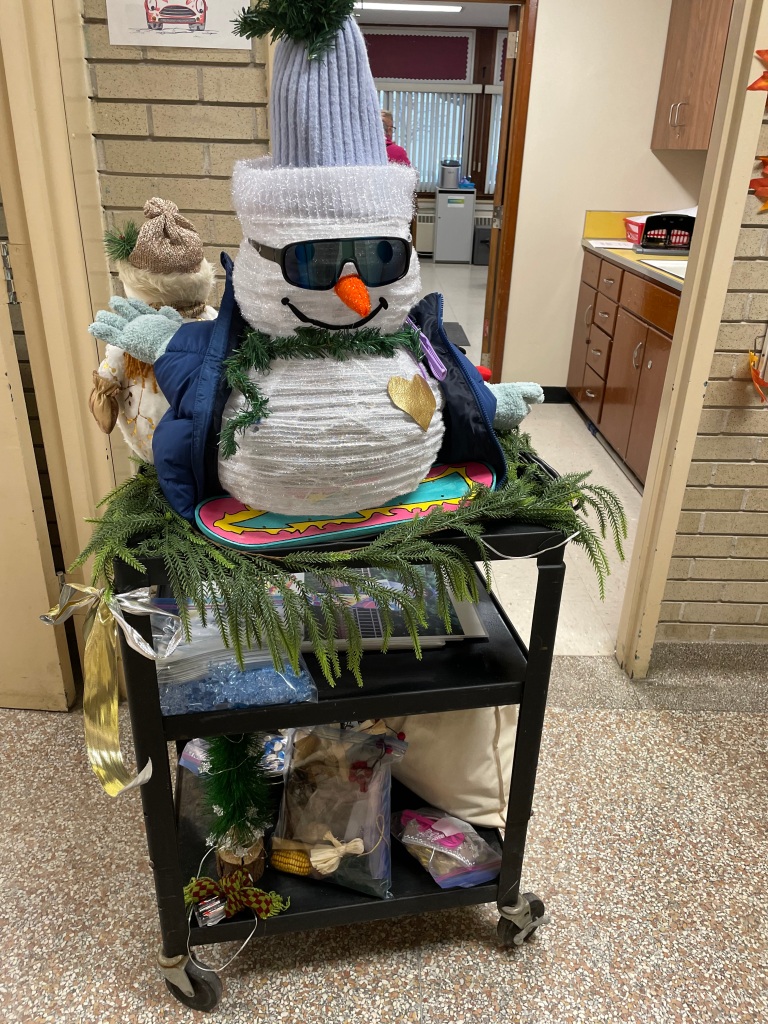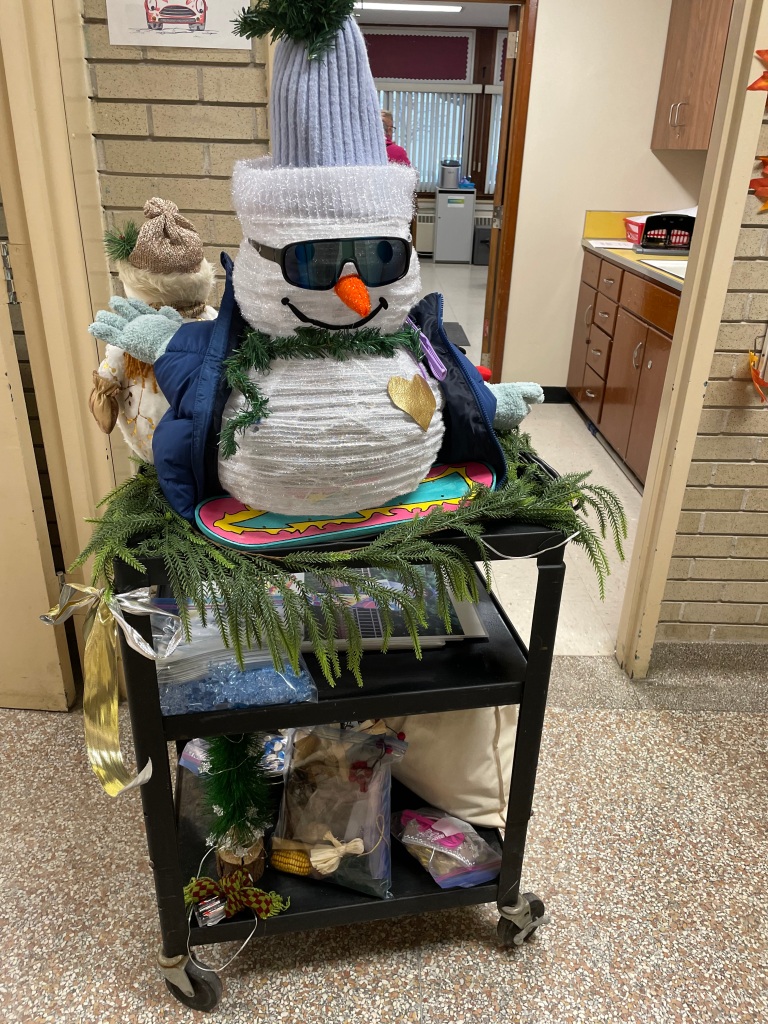
Once again, I travelled from class to class with a cart, brimming with objects found in the pages of my tale! Letting children see, hear and handle items described in the text gave them a richer understanding of the story!
Holding the furry forest stuffies and listening to the birdsong of blue jays, cardinals and the Canada Goose was a hoot! Students couldn’t wait to tell me about their own experiences in nature…their real life connections with the content of the story was meaningful!
Many students knew what a snowball maker was, how to use it and where to buy one!! They also had a few hockey and snow stories of their own! Some thought they’d like playing “king of the castle” and sledding like Ice Cap! Yet many had never seen a real bluejay feather or a real corn husk doll. It was particularly cool to see the reaction of one class who had just been studying how the pioneers learned to make corn husk toys from the Indigenous people.
When I passed around the real dolls, there was an “aha” moment. History makes a lot of sense when we can hold concrete examples of it in our hands! Some students wondered if they could make the toys. (Just be tech savvy like Ice Cap, search YouTube with parents and find out how!) They were surprised to discover that the First Nations ancestors of their own home town traditionally made corn husk toys! (That’s who taught my mom!)
You just can’t make this stuff up! Authentic learning rocks. Using real objects from a story (fiction or non-fiction) to build student curiosity and comprehension and to give kids a chance to make personal connections is such a win!
When I present Ice Cap, the author journey and process of writing a story to older grades, Ice Cap will return a la carte! Sometimes the story is in the details! 🥰☃️🌽🛷🦊🍁🌲I can hardly wait!
Ciao for now!
Joan Epp


